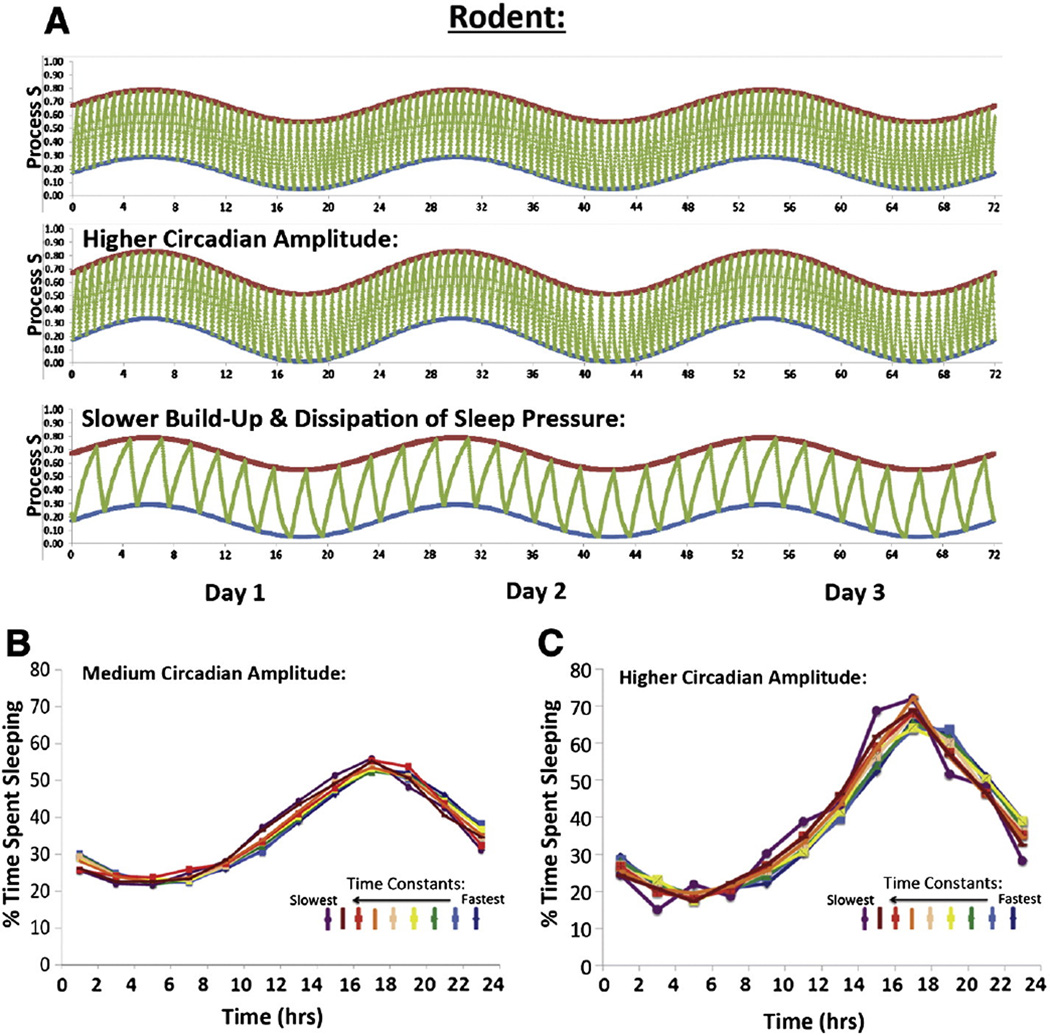Fig. 4.
Modeling adolescent sleep in rodents using the two-process model. A) To model adolescent changes in the sleep patterns of polyphasic species, such as laboratory rodents, we increased the speed of homeostatic sleep pressure build up and dissipation (Phillips et al., 2010), and then ran a similar set of simulations as humans, but varying the time constants between 50% and 400% of τi = 0.215 h (an instantaneous build up rate of 1.65/h) and τd = 0.606 h (an instantaneous break down rate of 4.65/h). It should be noted that although the time constants for sleep pressure build up and dissipation have not been well-studied in developing rodents, models predict that a 160–200% increase in τ might occur in these small, fast-developing species simply due to brain growth (Phillips et al., 2010) and observations of behavioral and SWA suggest that the ability to tolerate sleep deprivation may increase by 3 to 12-fold (!) in rats between weaning and adulthood (Alfoldi et al., 1990). We found that a higher amplitude circadian rhythm in the sleep and wake threshold and slower time constants produced an obvious consolidation of sleep and wake. B) Slower time constants produced a small phase advance in the timing of sleep. Sleep data from the simulations was averaged over three days to produce estimates of daily rhythms in percentage time spent asleep, with data from the slowest time constants illustrated in red, and the fastest illustrated in blue. The phase advance in response to slower time constants is indicated by the leftward shift in the curves, as indicated by the rainbow appearance. C) These trends were more obvious in models that included a higher amplitude circadian rhythm in the sleep and wake threshold (A = 0.16). These models also showed a higher amplitude daily rhythm in sleep and wake, typical of mature rodents.

